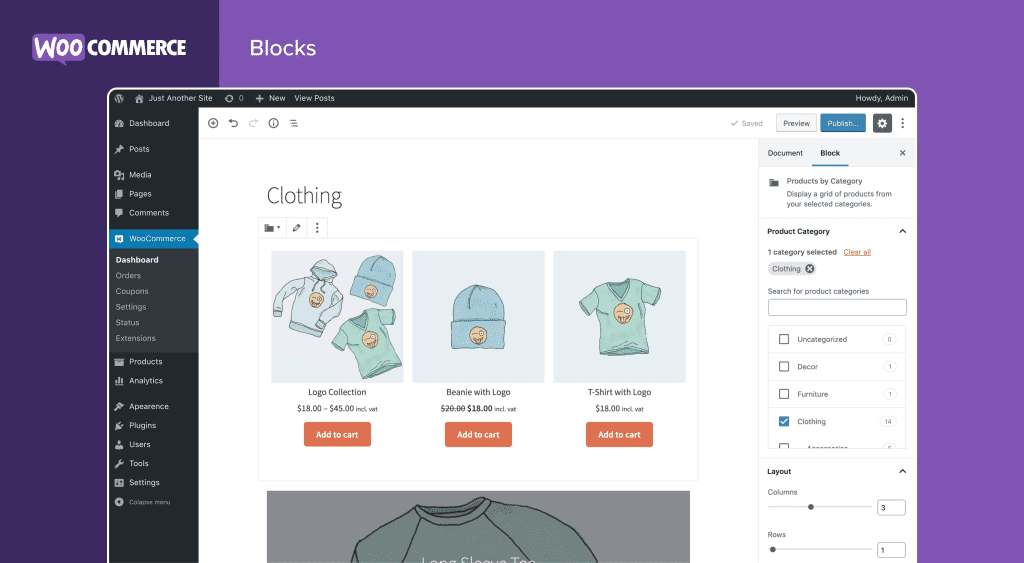Key Takeaways
- Market Mastery: Conduct thorough market research to shape your business concept, tapping into Malaysian consumer preferences and staying attuned to evolving trends.
- Legal Compliance Anchored: Ensure a stable foundation by navigating and adhering to Malaysia’s legal requirements, securing your business with proper registration and compliance.
- Digital Dominance: Craft a robust online presence with SEO-driven strategies, explore e-commerce platforms, and leverage analytics to optimize performance – key pillars for sustained success in Malaysia’s dynamic e-commerce landscape.
Welcome to the gateway of entrepreneurial success in the vibrant and dynamic market of Malaysia.
If you’ve ever dreamt of launching your own online business, you’re in the right place.
In this comprehensive guide, we will navigate the intricate landscape of starting an online venture in Malaysia, providing you with the knowledge and insights necessary to turn your entrepreneurial aspirations into a thriving reality.

Why Start an Online Business in Malaysia?
As the world rapidly embraces the digital era, Malaysia stands out as a prime destination for online entrepreneurship.
Boasting a burgeoning internet-savvy population and a robust e-commerce ecosystem, the Malaysian market presents a wealth of opportunities for those with the vision to seize them.
From the bustling streets of Kuala Lumpur to the serene landscapes of Penang, the demand for online products and services continues to soar.
The Digital Landscape in Malaysia
Before we delve into the nitty-gritty of setting up your online business, let’s take a moment to appreciate the digital landscape in Malaysia.
With a rapidly growing internet penetration rate and a tech-savvy consumer base, Malaysia offers a fertile ground for businesses to thrive in the digital realm.
Whether you’re envisioning an e-commerce store, a service-oriented platform, or a niche blog, understanding the digital pulse of the country is crucial for success.
What Sets This Guide Apart?
Embarking on the journey of starting an online business can be both exhilarating and overwhelming.
That’s why we’ve meticulously crafted this guide to be your trusted companion throughout the entire process.
Unlike generic resources, our guide is tailored specifically for aspiring entrepreneurs in Malaysia.
We’ll not only cover the universal principles of online business but also provide insights and strategies that are uniquely relevant to the Malaysian market.
Your Roadmap to Success
This guide is not just a compilation of generic tips but a comprehensive roadmap meticulously designed to guide you from conceptualization to the successful launch and growth of your online venture.
Each section is crafted with precision to ensure that you not only start your business but also position it for long-term success in the Malaysian landscape.
Who Can Benefit from This Guide?
Whether you’re a seasoned entrepreneur exploring new horizons or a first-time business owner with a vision, this guide is your go-to resource.
We cater to a diverse audience – from ambitious individuals looking to turn their hobbies into income streams to seasoned professionals aiming to expand their business footprint in the digital space.
Regardless of your background or experience level, our guide is crafted to empower and enlighten you.
In the chapters that follow, we will navigate the complex terrain of market research, legal requirements, online presence building, e-commerce platforms, marketing strategies, fulfilment and delivery, customer service, and analytics.
Each section is meticulously curated to provide actionable insights, practical tips, and real-world examples that you can apply directly to your online business journey.
So, let’s embark on this exciting odyssey together. Fasten your seatbelts, and let’s explore the limitless possibilities of starting an online business in Malaysia. Your entrepreneurial adventure begins now.
But, before we venture further, we like to share who we are and what we do.
About AppLabx
From developing a solid marketing plan to creating compelling content, optimizing for search engines, leveraging social media, and utilizing paid advertising, AppLabx offers a comprehensive suite of digital marketing services designed to drive growth and profitability for your business.
AppLabx is well known for helping companies and startups in Malaysia use digital marketing to drive web traffic to their websites and web apps.
At AppLabx, we understand that no two businesses are alike. That’s why we take a personalized approach to every project, working closely with our clients to understand their unique needs and goals, and developing customized strategies to help them achieve success.
If you need a digital consultation, then send in an inquiry here.
How to Start an Online Business in Malaysia: A Complete Guide
- Market Research and Idea Generation
- Legal Requirements and Business Registration
- Building a Strong Online Presence
- E-commerce Platforms and Payment Gateways
- Marketing Strategies
- Fulfillment and Delivery
- Customer Service and Retention
- Analytics and Performance Measurement
1. Market Research and Idea Generation

Understanding the Malaysian Market
- Internet Penetration and E-commerce Growth
- As of 2022, around 94 per cent of the population was connected to the internet, making it a lucrative space for online businesses.
- Actionable Tip: Leverage this high internet penetration to reach a vast online audience and explore niches that align with evolving digital trends.
- Consumer Behavior and Preferences
- Approximately 24.77 per cent of respondents stated they made online purchases at least once a month.
- Strategic Implication: Tailor your products or services to align with the preferences of online shoppers, ensuring your business caters to the digital inclinations of the Malaysian audience.
Identifying Target Audience and Their Needs
- Demographic Analysis
- Data-Driven Approach: Utilize tools like Google Analytics and social media insights to understand the demographics of your potential customers.
For instance, if your target audience consists largely of young professionals, your marketing strategies and product offerings should align with their preferences.
- Data-Driven Approach: Utilize tools like Google Analytics and social media insights to understand the demographics of your potential customers.
- Psychographic Profiling
- Example: An online fitness platform can identify a growing interest in wellness among Malaysians. By tailoring their content to match the psychographic profiles of health-conscious individuals, they might successfully carve a niche for themselves in the market.

Analyzing Competitors and Market Trends
- Competitor Landscape
- Competitor Analysis Tools: Leverage tools like Semrush or Ahrefs to analyze competitors in your chosen niche. Identify their strengths, weaknesses, and unique selling propositions (USPs).
- Example: A Malaysian fashion e-commerce startup might analyze competitors’ pricing, identify a gap in affordable yet stylish clothing, and position itself as a budget-friendly yet trendy option.
- Emerging Trends in Malaysia
- Refer to recent market reports and industry analyses to spot emerging trends. For instance, the rise of sustainable products has gained traction globally and is increasingly influencing consumer choices in Malaysia as well.

Generating Viable Business Ideas
Assessing Personal Interests and Skills
- Passion-Driven Ventures
- An avid pet lover can identify the lack of specialized pet care products in the market. By combining their passion with entrepreneurship, they might establish an online pet store that quickly gained popularity among pet owners.
- Skill Utilization
- Example: A skilled graphic designer might notice the demand for personalized merchandise. Leveraging their design skills, they can launch an online store offering customized products, capitalizing on the growing trend of personalized items.

Identifying Profitable Niches in the Malaysian Market
- Niche Opportunities
- Market Research Insight: Although the demand for organic food in Malaysia is growing, the supply of local organic products is not able to keep up with the increased demand. Entrepreneurs can explore niches such as organic food, handmade crafts, or sustainable fashion.
- Strategic Consideration: Identify gaps in the market, and align your business with sustainable and locally-driven practices to tap into the eco-conscious consumer base.
2. Legal Requirements and Business Registration

Understanding Legal Considerations for Online Businesses
- Business Registration and Licensing
- Registering a business entity with the Companies Commission of Malaysia (SSM) is the first requirement to run a business legally in Malaysia.
- Actionable Tip: Ensure compliance by registering your online business entity promptly. This not only establishes legal credibility but also provides a framework for financial accountability.
- Compliance with Tax Regulations
- The Malaysian government imposes various taxes on businesses, including income tax and value-added tax (VAT). Understanding and complying with these tax regulations is crucial for sustainable operations.
- Strategic Insight: Seek professional advice to navigate the intricate tax landscape. Failure to comply with tax regulations may result in penalties, affecting your business’s financial health.
Choosing a Business Structure
- Sole Proprietorship, Partnership, or Sdn Bhd
- Pros and Cons of Sole Proprietorship: While easy to set up and manage, sole proprietorships expose the owner to unlimited liability. Consider this structure for small-scale ventures.
- Example: A freelance graphic designer may opt for sole proprietorship due to its simplicity and low regulatory requirements.
- Pros and Cons of Partnership
- Advantages: Partnerships share the load of responsibilities and resources. However, similar to sole proprietorships, partners have unlimited liability.
- Example: A team of friends starting an e-commerce store may choose a partnership to distribute tasks and responsibilities.
- Pros and Cons of Sdn Bhd (Private Limited Company)
- Advantages: Offers limited liability, separating personal and business assets. Ideal for businesses with growth ambitions and a desire for investment.
Building a Strong Online Presence: The Foundation of Legitimate Business Operations
Choosing a Memorable and Relevant Business Name
- Importance of a Unique Business Name
- Trademark Considerations: Conduct thorough research to ensure your chosen business name is unique and not trademarked by other entities. This prevents legal disputes and establishes your brand identity.
- Example: The Malaysian Intellectual Property Corporation (MyIPO) database is a valuable resource for checking existing trademarks.
- Registering a Domain and Setting up a Website
- Hosting Provider Considerations: Opt for reliable hosting providers like Exabytes or ServerFreak to ensure your website remains accessible and secure.
- Web Design and User-Friendly Interface: Invest in a user-friendly and mobile-responsive website. Platforms like WordPress, Shopify, or Adobe Commerce offer customizable solutions for diverse business needs.
- Utilizing Social Media Platforms for Brand Promotion
- Strategic Approach: Establish a presence on popular social media platforms such as Facebook, Instagram, and X (formerly Twitter). Leverage these channels for engaging content and customer interaction.
- Example: The success of Malaysian brands like FashionValet and Zalora showcases the power of social media in brand building.

E-commerce Platforms and Payment Gateways: Ensuring Seamless Transactions
Evaluating Popular E-commerce Platforms
- Shopify, WooCommerce, etc.
- Shopify, with its user-friendly interface, powers over a million businesses globally. WooCommerce, as a WordPress plugin, dominates the WordPress e-commerce market.
- Considerations: Assess the features, scalability, and pricing of each platform to determine the best fit for your business.
- Setting Up Secure Payment Gateways
- Payment Options in Malaysia: Consider local preferences when integrating payment gateways. Popular choices include iPay88 and Billplz.
- Security Measures: Emphasize secure payment processing to build trust with your customers. SSL certification and adherence to Payment Card Industry Data Security Standard (PCI DSS) are crucial.
3. Building a Strong Online Presence
In the fast-paced digital landscape of Malaysia, building a robust online presence is not just an option; it’s a necessity for the sustained success of your business.
This section will guide you through the essential steps to establish and strengthen your online presence, backed by data-driven insights and real-world examples.
Choosing a Memorable and Relevant Business Name
- Unique and Trademark-Free Names
- Trademark Considerations: Trademark registration in Malaysia is a crucial step for businesses looking to protect their intellectual property and establish a unique brand identity. A unique business name not only avoids legal conflicts but also helps in brand recognition.
- Domain Registration and Website Setup
- Reliable Hosting Providers: Choosing a reputable hosting provider is vital for website performance. Providers like Exabytes and ServerFreak offer reliable services, ensuring your website is accessible and secure.
- User-Friendly Platforms: Platforms like WordPress, Shopify, or Adobe Commerce provide customizable solutions for creating a user-friendly and responsive website.
- Leveraging Social Media for Brand Promotion
- Strategic Platform Selection: Establish a presence on popular social media platforms such as Facebook, Instagram, X (formerly Twitter), and LinkedIn, depending on your target audience.
- Engaging Content Strategies: The success of brands like FashionValet and Zalora in Malaysia is attributed to their engaging content and strategic use of social media for brand building.

Content Creation and Marketing Strategies
- Quality Content and SEO Practices
- SEO Best Practices: Implementing SEO strategies is crucial for visibility. Utilize tools like Google Keyword Planner to identify relevant keywords.
- Blogging for Business: Regular blog posts not only enhance SEO but also position your business as an industry authority.
Example: The Malaysian travel agency Tourism Malaysia employs a blog to promote various destinations and travel experiences.
- Video Marketing for Engagement
- Rise of Video Content: Video content is gaining popularity in Malaysia.
- YouTube and Beyond: Platforms like YouTube provide an excellent opportunity for businesses to create engaging video content.
Example: Cooking channels like Nyonya Cooking have gained a substantial following by showcasing Malaysian cuisine.

Social Media Marketing Strategies
- Harnessing the Power of Facebook
- Facebook’s Dominance: Facebook has undoubtedly become one of Malaysia’s most popular social networking platforms. As of February 2022, there were 24.31 million Facebook users in Malaysia.
- Ad Campaigns: Utilize Facebook Ads for targeted campaigns. Example: AirAsia effectively uses Facebook Ads to promote travel deals and engage with its audience.

- Instagram for Visual Branding
- Visual Appeal: Instagram’s visual nature makes it ideal for showcasing products or services. Malaysia’s Pavilion Kuala Lumpur Mall effectively uses Instagram to promote events and engage with the local community.
- Influencer Collaborations: Partnering with local influencers can amplify your reach and credibility on Instagram.

Email Marketing for Customer Retention
- Building a Subscriber List
- Effective Email Campaigns:
- Example: Lazada uses personalized email campaigns to notify customers of exclusive deals and promotions, fostering customer loyalty.
- Customer Feedback and Engagement
- Surveys and Feedback Forms: Collecting customer feedback is essential. Platforms like SurveyMonkey can be used for this purpose.
- Responsive Customer Support: Shopee exemplifies excellent customer support, promptly addressing queries and concerns to enhance customer satisfaction.
4. E-commerce Platforms and Payment Gateways
In the bustling e-commerce landscape of Malaysia, selecting the right platform and seamless payment gateways are pivotal decisions that can influence the success of your online business.
This section aims to guide you through the nuances of choosing e-commerce platforms and payment gateways.

Evaluating Popular E-commerce Platforms
- Shopify, WooCommerce, and Beyond
- Shopify’s Global Dominance: Powering over 1 million businesses globally, Shopify is a robust and user-friendly e-commerce solution.
- Actionable Tip: Evaluate Shopify’s scalability, ease of use, and pricing structure to determine its suitability for your business.
- WordPress-Powered WooCommerce
- Market Share: WooCommerce, as a WordPress plugin, captures a significant share of the e-commerce market, with over 5 million installations.
- Shopify’s Global Dominance: Powering over 1 million businesses globally, Shopify is a robust and user-friendly e-commerce solution.

- Consideration: If you prioritize customization and have a WordPress website, WooCommerce offers a seamless integration.
- Adobe Commerce for Enterprise-Level Solutions
- Enterprise Scale: Adobe Commerce is favoured for large-scale enterprises. It powers more than 200,000 websites.
- Strategic Fit: Consider Adobe Commerce if your business requires advanced features and customization capabilities.

Setting Up Secure Payment Gateways
- Payment Options in Malaysia
- Local Preferences: Malaysian consumers have distinct payment preferences.
Malaysians increasingly use credit cards and wallets in favour of cash in physical stores, as the market share of cash declined further.
It was still the POS’s most popular payment method as nearly 40 percent of all money spent in-store was paid for with paper money or coins.- Strategic Tip: Integrate payment gateways that align with local preferences for a frictionless shopping experience.
- iPay88 for Comprehensive Solutions
- Wide Acceptance: iPay88 is a leading payment gateway in Malaysia, offering a range of payment options. It boasts over 30,000 merchants on its platform.
- Example: Homegrown e-commerce giant Lazada uses iPay88 to facilitate secure online transactions.
- Local Preferences: Malaysian consumers have distinct payment preferences.

- Billplz for Streamlined Transactions
- SME-Friendly: Billplz is recognized for its user-friendly interface and is popular among SMEs. It’s a preferred choice for many local businesses.
- Consideration: If you’re a small to medium-sized business, Billplz can offer a streamlined payment experience.
Security Measures and Compliance
- SSL Certification for Secure Transactions
- Consumer Trust: SSL certification is essential for securing online transactions.
- Implementation: Ensure your e-commerce platform and payment gateways are SSL-certified to safeguard customer data.
- Consumer Trust: SSL certification is essential for securing online transactions.
- PCI DSS Compliance
- Data Security Standard: Payment Card Industry Data Security Standard (PCI DSS) compliance is non-negotiable for handling cardholder information securely.
- Strategic Move: Adhere to PCI DSS requirements to protect your business and customer data from potential breaches.
- Data Security Standard: Payment Card Industry Data Security Standard (PCI DSS) compliance is non-negotiable for handling cardholder information securely.
Global Trends in E-commerce and Payment Technologies
- Rise of Mobile Commerce
- 54.7% of eCommerce transactions in Malaysia are completed on a mobile device.
- Optimization: Ensure your chosen e-commerce platform and payment gateways are optimized for mobile devices to tap into this expanding market.
- 54.7% of eCommerce transactions in Malaysia are completed on a mobile device.
- Integration of Cryptocurrency Payments
- Emerging Trend: Globally, the integration of cryptocurrency payments is gaining traction. Malaysia is no exception, with a growing number of businesses exploring this option.
- Caution: While considering cryptocurrency integration, be aware of regulatory developments and consumer acceptance.
- Emerging Trend: Globally, the integration of cryptocurrency payments is gaining traction. Malaysia is no exception, with a growing number of businesses exploring this option.
5. Marketing Strategies
Crafting effective marketing strategies is pivotal for the success of your online business in the dynamic market of Malaysia.
In this comprehensive guide, we will explore diverse marketing approaches, supported by data-driven insights and real-world examples to help you navigate the intricacies of digital promotion.
Developing a Comprehensive Marketing Plan
- Search Engine Optimization (SEO)
- SEO’s Impact on Visibility: 53.3% of all website traffic comes from organic search. In Malaysia, with a population that heavily relies on online searches, SEO is fundamental.
- Actionable Tip: Utilize tools like Google Keyword Planner to identify high-impact keywords relevant to your business.
- Local SEO for the Malaysian Market
- Google My Business: Optimize your Google My Business listing, as local SEO is crucial.
- Example: Local businesses like MyBurgerLab leverage local SEO to appear prominently in search results.
- SEO’s Impact on Visibility: 53.3% of all website traffic comes from organic search. In Malaysia, with a population that heavily relies on online searches, SEO is fundamental.

- Social Media Marketing
- Dominance of Social Media in Malaysia: Malaysia has a vibrant social media landscape. As of Jan 2023, Malaysia had 26.8 million social media users which accounts for 78% of its total population. Effective social media marketing is, therefore, indispensable.
- Platform Selection: Tailor your strategy based on popular platforms like Facebook, Instagram, X (formerly Twitter), and LinkedIn.
- Content Creation and Engagement
- Content Trends: Connected TV (CTV) and social video are among the most popular content marketing tactics worldwide. Leverage platforms like TikTok and Instagram Reels for engaging short-form videos.
- Example: The Malaysian brand Petronas effectively uses Instagram for storytelling and engaging content.
- Dominance of Social Media in Malaysia: Malaysia has a vibrant social media landscape. As of Jan 2023, Malaysia had 26.8 million social media users which accounts for 78% of its total population. Effective social media marketing is, therefore, indispensable.

- Email Marketing
- Email’s Enduring Relevance: Despite the rise of new marketing channels, email remains a powerful tool.
- Segmentation Strategies: Segment your email list to deliver targeted content based on customer preferences and behaviour.
- Customer Retention through Email
- Customer Loyalty Programs: Incorporate loyalty programs into your email strategy. The cost of acquiring new customers is five times higher than the cost of retaining existing customers.
- Example: Watsons Malaysia effectively utilizes email campaigns to inform customers about promotions, discounts, and exclusive member benefits.
- Email’s Enduring Relevance: Despite the rise of new marketing channels, email remains a powerful tool.

Utilizing Paid Advertising Options
- Google Ads for Search Engine Visibility
- Impactful PPC Advertising: Google Ads is a powerful tool for immediate visibility. Businesses make an average of $2 in revenue for every $1 they spend on Google Ads.
- Strategic Bidding: Optimize your bids based on keyword competitiveness and audience targeting.
- Facebook Ads for Targeted Campaigns
- Facebook’s Dominance in Malaysia: Facebook Ads offer precise audience targeting.
- Example: AirAsia effectively uses Facebook Ads to promote travel deals and engage with its audience.
- Impactful PPC Advertising: Google Ads is a powerful tool for immediate visibility. Businesses make an average of $2 in revenue for every $1 they spend on Google Ads.

- Budgeting and Targeting Strategies
- Data-Driven Budget Allocation: Allocate your budget based on the performance of different channels. Utilize tools like Google Analytics to assess the ROI of each marketing channel.
- Audience Targeting on Social Media: Leverage detailed targeting options on platforms like Facebook to reach specific demographics, interests, and behaviours.
Analyzing Key Performance Indicators (KPIs)
- Utilizing Analytics Tools for Performance Measurement
- Google Analytics for Insightful Data: Google Analytics provides a wealth of information about website performance.
- Actionable Insights: Analyze bounce rates, conversion rates, and user demographics to refine your marketing strategies.
- Social Media Insights
- Platform-Specific Analytics: Platforms like Facebook and Instagram offer insights into post reach, engagement, and audience demographics.
- Iterative Optimization: Regularly assess these metrics to refine your social media content strategy.
- Google Analytics for Insightful Data: Google Analytics provides a wealth of information about website performance.
6. Fulfillment and Delivery
In the realm of Malaysian e-commerce, efficient fulfilment and delivery processes are paramount for customer satisfaction and the success of your online business.
This comprehensive guide explores the intricacies of fulfilment and delivery, blending data-driven insights with real-world examples to help you navigate the challenges of the last mile.

Understanding Fulfillment Strategies
- In-House vs. Third-Party Fulfillment
- In-House Fulfillment Control: Operating an in-house fulfilment centre provides control over the entire process. However, it requires substantial resources and infrastructure.
- Third-Party Fulfillment Efficiency: Outsourcing to established fulfilment services like EasyParcel or BoxC offers scalability and expertise without the burden of managing logistics.
- Strategic Warehousing Decisions
- Proximity to Customer Base: Optimize warehousing locations to be close to major population centers.
- Example: E-commerce giant Lazada strategically locates its fulfillment centers to cover key areas efficiently.
Implementing Effective Delivery Systems
- Last-Mile Delivery Optimization
- Significance of Last Mile: The last mile is the costliest part of the journey for companies and accounts for 53% of overall shipping costs.
- Delivery Partnerships: Collaborate with local delivery partners like Pos Laju or integrate with courier aggregators like EasyParcel for cost-effective last-mile solutions.
- Same-Day and Next-Day Delivery Trends
- Consumer Expectations: 64% of consumers say delivery speed is important to them.
- Example: Shopee offers same-day delivery services, aligning with consumer expectations for swift order fulfillment.
Strategies for Enhancing Customer Experience
- Real-Time Tracking and Communication
- Transparency Builds Trust: Provide real-time tracking information.
- Technology Integration: Integrate tracking tools like ParcelTrack or leverage built-in tracking features of major courier services.
- Flexible Delivery Options
- Diverse Delivery Windows: Offer varied delivery windows, including weekends and evenings.
- Example: Foodpanda provides flexible delivery options for food orders, allowing customers to choose convenient time slots.

Leveraging Technology and Innovations
- Automation in Warehousing and Order Processing
- Efficiency Gains: Automation reduces processing times and minimizes errors. The Asia Pacific Warehouse Automation Market size is expected to reach USD 28.02 billion by 2029.
- Example: Amazon’s use of robotic systems in fulfilment centres showcases the potential of automation.

- Drone and Autonomous Vehicle Deliveries
- Futuristic Solutions: Drones and autonomous vehicles are being explored for last-mile deliveries globally. In Malaysia, DHL has tested drones for parcel delivery.
- Regulatory Considerations: Stay informed about evolving regulations governing the use of drones and autonomous vehicles.
Ensuring Compliance with Regulatory Requirements
- Customs and Import Regulations
- International Shipping Challenges: If your business involves international shipping, familiarize yourself with customs regulations. The Customs Department of Malaysia provides essential information.
- Smooth Customs Clearance: Work with carriers experienced in navigating customs procedures to ensure smooth cross-border deliveries.
- Adherence to Local Shipping Laws
- Legal Compliance: Comply with local shipping laws and regulations. Malaysia has specific laws governing shipping and logistics, and staying compliant is critical.
- Resource: Refer to the Malaysian Ministry of Transport for information on shipping regulations.
7. Customer Service and Retention
In the digital era of Malaysian e-commerce, customer service isn’t just a department; it’s a cornerstone of your brand’s identity.
This comprehensive guide delves into the intricacies of providing exceptional customer service and effective retention strategies, blending data-driven insights with practical examples to help you build lasting relationships with your customers.

The Imperative of Outstanding Customer Service
- Impact of Customer Service on Business Success
- Statistical Insight: According to a study by Microsoft, 96% of their respondents say customer service plays a role in their choice of and loyalty to a brand.
- Actionable Tip: Prioritize customer service as a strategic asset for fostering loyalty and repeat business.
- Elements of Exceptional Customer Service
- Prompt Responsiveness: Speedy responses to customer inquiries are crucial. 90% of customers rate an “immediate” response as important or very important when they have a customer service question.
- Personalization: Tailor interactions based on customer preferences and history to create a personalized experience.
Utilizing Technology for Efficient Customer Service
- Implementing Chatbots for Instant Support
- Chatbot Popularity: The size of the chatbot market is forecast to reach around 1.25 billion U.S. dollars in 2025.
- Example: Watsons Malaysia integrates chatbots to provide instant assistance and answer frequently asked questions.
- Leveraging Social Media for Customer Interaction
- Social Media as a Customer Service Channel: 74% of customers will be reaching out to brands over social.
- Example: AirAsia actively engages with customers on social media, promptly addressing queries and concerns.
Building Customer Loyalty and Retention Strategies
- Implementing Loyalty Programs
- Incentivizing Repeat Purchases: 77% of consumers participate in loyalty programs, and 46% modify the brands they purchase to maximize loyalty benefits.
- Example: Lazada employs a robust loyalty program, offering discounts, vouchers, and exclusive deals for repeat customers.

- Personalized Email Campaigns
- Effective Email Marketing: More than half (60%) of consumers say they will likely become repeat buyers after a personalized shopping experience with a retailer.
- Strategic Approach: Segment your email lists based on customer behaviour and preferences to deliver targeted and relevant content.
Handling Customer Feedback and Complaints
- Proactive Handling of Customer Feedback
- Turning Negative to Positive: 68% of consumers trust reviews more when they see both good and bad scores.
- Example: Zalora actively seeks and addresses customer feedback, demonstrating transparency and a commitment to improvement.
- Transparent Communication During Issues
- Open Communication Channels: 92% of customers feel satisfied using the live chat feature.
- Example: Shopee utilizes live chat to provide real-time support during the shopping process, addressing concerns promptly.

Monitoring Customer Satisfaction and Metrics
- Utilizing Net Promoter Score (NPS)
- Measuring Customer Loyalty: NPS is a widely used metric to gauge customer satisfaction and loyalty. A high NPS score indicates strong brand advocacy from promoters who willingly recommend your products or services to others.
- Actionable Use: Regularly measure NPS and use feedback to enhance your products, services, and customer interactions.
- Analyzing Customer Service Metrics
- Key Metrics to Track: Metrics like First Response Time, Resolution Time, and Customer Satisfaction Score (CSAT) provide insights into the efficiency and effectiveness of your customer service.
- Strategic Insights: Platforms like Zendesk and Freshdesk offer analytics tools to track and analyze these metrics.
8. Analytics and Performance Measurement
In the data-driven landscape of Malaysian e-commerce, analytics, and performance measurement are the compass guiding strategic decisions.
This comprehensive guide will delve into the intricacies of analytics, providing insights and examples backed by data to help you decode the metrics that drive success in the dynamic digital marketplace.

Importance of Analytics in E-commerce
- Data-Driven Decision Making
- Statistical Impact: Data-driven organizations are 23 times more likely to acquire customers.
- Actionable Tip: Prioritize data-driven decision-making to gain a competitive edge.
- Understanding Customer Behavior
- Conversion Rate Optimization (CRO): The global e-commerce conversion rate is 2.58%.
- Example: Implement A/B testing on your website, similar to Zalora, to optimize the user experience and boost conversion rates.
Implementing Key E-commerce Analytics Tools
- Google Analytics for Holistic Insights
- Wide Adoption: Google Analytics is the go-to tool for many e-commerce businesses. It’s used by 87% of the top 10,000 websites in the world.
- Actionable Use: Utilize Google Analytics to track user behavior, monitor traffic sources, and measure the effectiveness of marketing campaigns.
- E-commerce Platform Analytics
- Shopify Analytics: Shopify provides robust analytics tools to track sales, customer behavior, and inventory.
- Adobe Commerce Analytics: Adobe Commerce’s analytics capabilities cater to enterprise-level businesses.
Measuring Website Performance
- Page Load Speed and User Experience
- Impact on Conversions: A study by Google found that as page load time goes from one second to 10 seconds, the probability of a mobile site visitor bouncing increases by 123%.
- Optimization Strategies: Use tools like Google PageSpeed Insights to identify and resolve performance bottlenecks.
- Mobile Responsiveness Metrics
- Mobile Usage in Malaysia: Mobile responsiveness is critical.
- Example: Shopee ensures a seamless mobile shopping experience, contributing to its popularity in Malaysia.
Conversion Rate Optimization (CRO) Strategies
- A/B Testing for Website Elements
- Impact on Conversion Rates: 71% of companies run 2 or more A/B tests to improve their conversion rates.
- Actionable Tip: Experiment with different elements like headlines, CTAs, and product images to identify high-converting variations.
- Cart Abandonment Analysis
- Global Abandonment Rate: The average shopping cart abandonment rate across eighteen industries is 78.1%.
- Retargeting Strategies: Implement retargeting campaigns, as done by Lazada, to bring back users who abandoned their carts.
Social Media Analytics Strategies
- Monitoring Social Media Engagement
- Facebook Insights: Utilize Facebook Insights to track engagement metrics.
- Example: Zalora uses Facebook Insights to gauge audience engagement and tailor content accordingly.
- Influencer Marketing Analytics
- Performance Metrics: Measure the impact of influencer marketing campaigns using metrics like engagement rate and conversion tracking.
- Example: Brands like FashionValet collaborate with influencers, tracking performance through unique promo codes and affiliate links.
Data Security and Privacy Compliance
- Adherence to Data Protection Laws
- Personal Data Protection Act (PDPA): Malaysia’s PDPA is crucial for safeguarding customer data. Familiarize yourself with and adhere to data protection regulations.
- Resource: Refer to the Personal Data Protection Commission Malaysia for guidance on compliance.
- Secure Transactions and SSL Certification
- Consumer Trust Impact: 85% of web users state they wouldn’t buy through a website where they weren’t certain their data was being transferred securely.
- Actionable Tip: Ensure your website has SSL certification for secure transactions.
Utilizing Predictive Analytics for Forecasting
- Forecasting Sales Trends
- Strategic Planning: Predictive analytics aids in forecasting sales trends, enabling inventory planning and strategic decision-making.
- Example: E-commerce giants like Lazada leverage predictive analytics to anticipate customer demand during sales events.
- Customer Lifetime Value (CLV) Prediction
- Strategic Marketing Allocation: Predicting CLV allows businesses to allocate marketing resources effectively. A 5 per cent increase in customer retention results in a profit increase of 25 to 95 per cent.
- Example: Shopee employs CLV predictions to tailor promotions for high-value customers.
Conclusion
Setting Sail with Market Research and Idea Generation
Embarking on your online business journey begins with a solid foundation of market research and creative idea generation.
The insights garnered from understanding your audience and market trends lay the groundwork for a business concept that resonates with Malaysian consumers.
As you set sail, continue refining your concept, staying agile to meet evolving market demands.
Legal Requirements and Business Registration: Anchoring Compliance and Stability
Navigating the legal landscape ensures your business is built on a stable foundation.
By comprehending and adhering to legal requirements and undertaking business registration, you secure the compliance necessary for a smooth and lawful operation.
As you proceed, seek professional guidance to ensure ongoing adherence to regulatory obligations.
Building a Digital Fortress: Crafting a Strong Online Presence
Your online presence serves as the gateway to connecting with your target audience.
From website development to SEO strategies, you’ve explored the tools to build a digital fortress.
As you move forward, maintain an active online presence, consistently creating valuable content, and optimizing your website for search engines to stay visible and relevant.
E-commerce Platforms and Payment Gateways: Navigating the Digital Marketplace
Choosing the right e-commerce platform and secure payment gateways is crucial for a seamless online shopping experience.
You’ve navigated the nuances of platform selection and integrated payment gateways aligned with local preferences.
Moving forward, implement your chosen solution and ensure a user-friendly transaction process for your customers.
Marketing Mastery: Orchestrating a Symphony of Strategies
A comprehensive marketing plan, combining SEO best practices, social media engagement, and paid advertising, propels your brand’s visibility and engagement.
By delving into diverse marketing channels, you’ve laid the groundwork for success.
Moving ahead, continue refining your marketing strategies, staying attuned to consumer trends and technological advancements.
Fulfillment and Delivery: Mastering the Last Mile
Efficient fulfilment and delivery processes are the heartbeat of your online business.
Navigating options like in-house vs. third-party fulfillment and optimizing last-mile delivery ensures customer satisfaction.
As you move forward, implement effective delivery systems, ensuring timely and reliable services to enhance the overall customer experience.
Customer Service and Retention: Cultivating Long-lasting Relationships
Exceptional customer service and effective retention strategies are the keys to cultivating long-lasting relationships with your audience.
Proactive support, loyalty programs, and transparent communication during issues build trust.
As you proceed, infuse a customer-centric culture into your business, understanding that outstanding service goes beyond transactions.
Analytics and Performance Measurement: Deciphering Success through Data Mastery
In the intricate dance of e-commerce success, mastering analytics is crucial. You’ve decoded data, measured website performance, and utilized predictive insights.
As you move forward, regularly analyze metrics, track customer behaviour, and leverage insights to continually optimize your strategies and offerings.
If you are looking for a top-class digital marketer, then book a free consultation slot here.
If you find this article useful, why not share it with your friends and business partners, and also leave a nice comment below?
We, at the AppLabx Research Team, strive to bring the latest and most meaningful data, guides, and statistics to your doorstep.
To get access to top-quality guides, click over to the AppLabx Blog.
People also ask
How to start an online business in Malaysia?
Embark on your online business journey in Malaysia with our comprehensive guide. From market research and legal compliance to building a robust online presence and mastering analytics, discover actionable insights to navigate the dynamic e-commerce landscape and propel your business to success.
How can a foreigner start a business in Malaysia?
Initiating a business in Malaysia as a foreigner involves specific steps. Secure the necessary approvals, choose a suitable business structure, and adhere to legal requirements. Engage with the Companies Commission of Malaysia (SSM) and consider partnering with a local resident as a director or shareholder.
How much does it cost to start a business in Malaysia for a foreigner?
Starting a business in Malaysia as a foreigner incurs various costs, including business registration fees, work visa expenses, and operational expenditures. Costs vary based on business type and scale. Engage with authorities and seek professional guidance for a detailed cost breakdown.




































